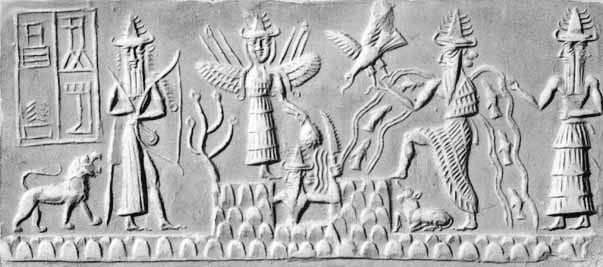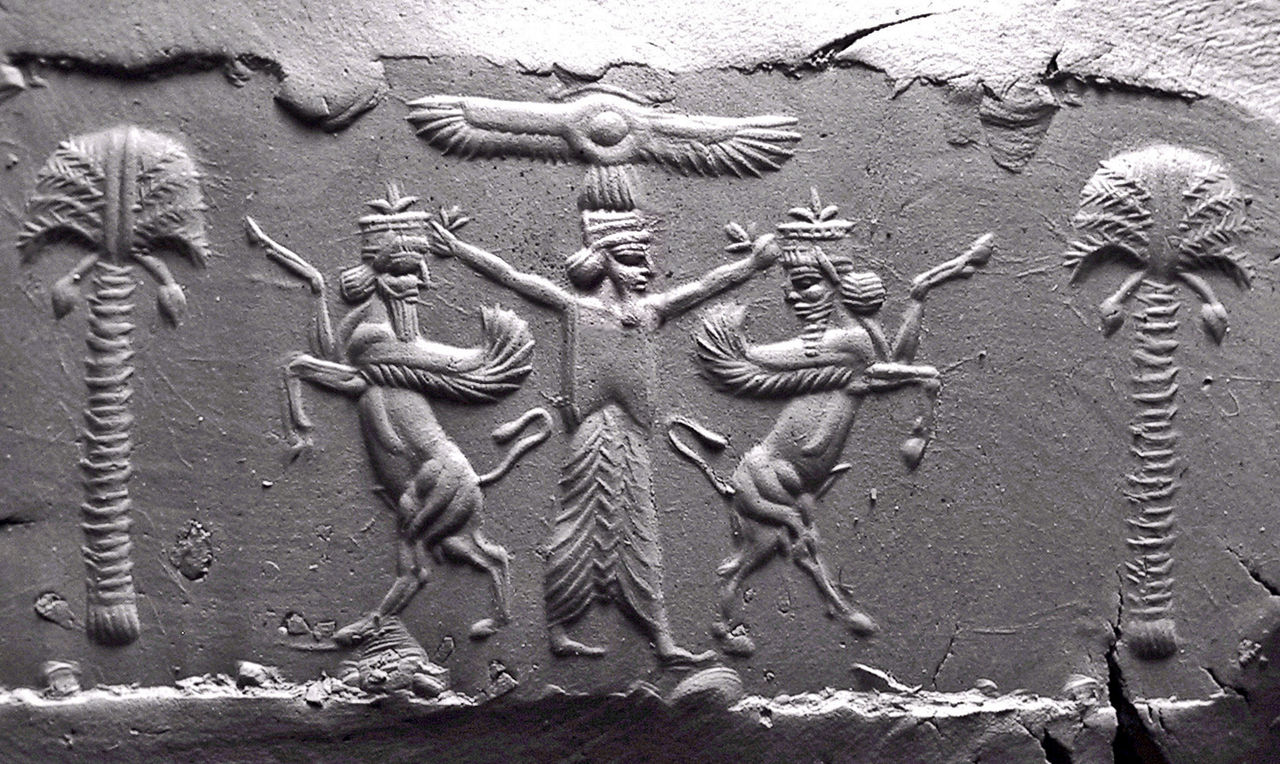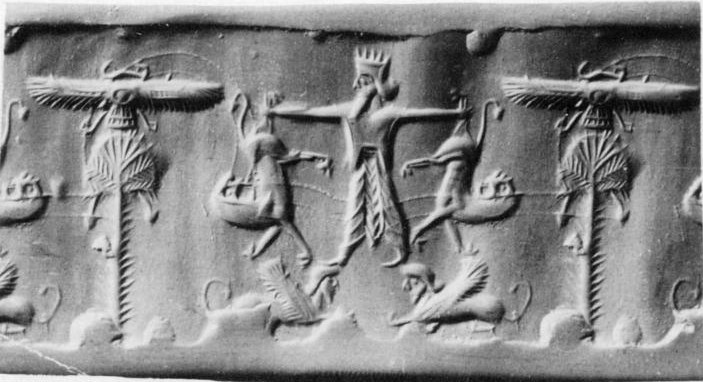Ancient Psychedelia: Alien Gods & Mushroom Goddesses
Online Book - Chapter 8, Page 112
Back to Online Book Mainpage / Next Page (Chapter 8, Page 113)
| In the early Sumerian King List, the first dynasty after the flood is the Dynasty of Kish and the thirteenth king of Kish is listed as Etana the shepherd, who ascended to heaven on the back of an eagle to obtain the plant of life so he may beget a son. The seal depicts a figure rising from the ground on an eagle, while sheeps graze and two dogs stare up at Etana as he ascends. The myth tells the story of a serpent and an eagle and “opens with a description of the state of mankind after the Flood, without the guidance and shepherding of a king. The insignia of kingship, the scepter, crown, tiara and shepherd’s crook are laid up before Anu in heaven. Then the great Anunnaki, the deciders of destiny, decide that kingship shall be sent down from heaven. It is apparently to be inferred that Etana is the appointed king. But in order to secure the permanence of the kingship, an heir was necessary and Etana has no son. We are shown Etana as daily offering sacrifices to Shamash and beseeching the god to grant him an heir. He cries to Shamash, ‘O Lord, may it issue from thy mouth, grant me the plant of birth, show me the plant of birth, remove my burden and produce for me a name’.” Shamash tells the king to cross the mountain, there he will find a pit, and in the pit an eagle imprisoned, he is to free the eagle and the eagle will guide him to the plant of birth. Next is introduced the story of the eagle and the serpent. In the beginning, the eagle and serpent had sworn a solid oath of friendship. The eagle had his nest and young in the top of the tree, while the serpent and his young lived at the base. They undertook to protect and provide food for each other’s young. But the eagle broke his oath and devoured the serpent’s young while the serpent was away hunting and so the serpent appealed to Shamash who instructed the serpent how to break the wing of the eagle and trap it on the ground. When the eagle lay trapped it cried to Shamash for help. Shamash sent Etana to free the eagle and when this happened the eagle, in gratitude, agreed to take Etana on his wings up to Ishtar’s Temple where he could obtain the plant of birth. The story has a happy ending with the king being granted a son. (50) The image of Etana on the back of an eagle is often depicted on Sumerian seals and the backside of some early coinage. When we see Perseus flying on the back of Pegasus with Medusa’s head in a sack in his hands, flying towards the sky, we may compare this to Etana’s flight to heaven for the “Plant of Birth.” (51) Sumerian seals are actually not that difficult to interpret if you know the mythology and use some creativity. In the example shown, which the scholars tell us depicts “Enki with two streams of water erupting from his shoulders. Utu holding his saw-sword. Above in the air hovers Inanna.” I can see Inanna is a mushroom goddess with her dress and single foot giving her identity away; there are some mushrooms growing up to the left of her and Utu, below Inanna looks like he may be harvesting the mushrooms, with the looks of the knife in his hands (24a). |
 (24a) Enki with two streams of water erupting from his shoulders. Utu holding his saw-sword. Above in the air hovers Inanna.
(24a) Enki with two streams of water erupting from his shoulders. Utu holding his saw-sword. Above in the air hovers Inanna.On an Achaemenid cylinder seal copy, c. 400-500 BC, we see a mushroom goddess in the middle who makes up the stem of the mushroom, while the bird above makes up the cap, and also is delivering the mushrooms from the sky. The goddess in the middle is bestowing royalty on the bulls who wear crowns, and blessing them with the mushroom. Next to them are two mushrooms trees occulted as palms or the tree of life, with its pinecones, and “mushroom apples” (24b). A different seal fills in some blanks in this picture. The “palm trees” are now seen directly under what looks like flying scarabs, similar to Khepri the dung beetle deity in Egypt. The flying beetles appear to have a mushroom at their base, where they are creating or planting the spores of the mushrooms trees growing up under them. The trees even have what looks like mushrooms or spores dropping down by the arrow shapes which are visible on the “dates” or “apples” or whatever the reader prefers to call them (24d).  (24b) Achaemenid Cylinder Seal Copy c. 400-500 BC  (24d) Trees of Life with flying scarabs (50) Middle Eastern Mythology, From the Assyrians to the Hebrews, S.H. Hooke, 1963, p. 59-60 (51) Shamanism and Drug Propaganda, p. 65-66 |
Go Back to Page 110